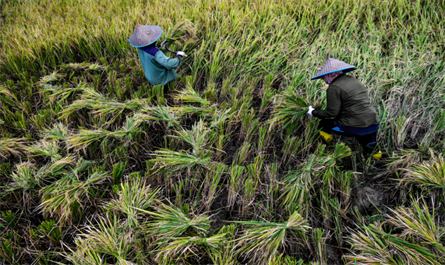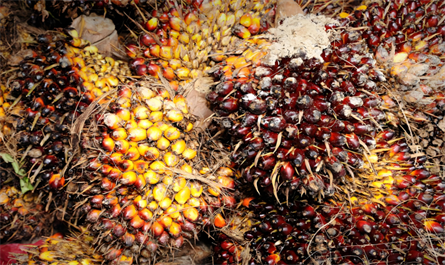Characteristics of Indonesian Agricultural Production
The tropical rainforest climate, characterized by year-round high temperatures and high rainfall, provides a near-permanent growth window for crops. Average annual temperatures of 25-28°C accelerate plant tillering by 40%. Palm oil palms, distributed across over 17,000 islands, mature 8-12 months earlier than oil palms in Central America. The stagnant water environment created by the prolonged rainy season is not entirely advantageous. In the Semarang region, 13% of cultivated land is flooded during each rainy season. Farmers use live weirs to precisely control the soaking time of rice paddies to within 47 days.

The humus formed by traditional slash-and-burn methods lasts more than three times longer than North American chernozems, but this contributes to the burning of 370,000 hectares of primary forest in Sumatra every decade. This year, the Ministry of Agriculture began piloting rotating biochar preparation boxes, which can increase burning efficiency by 60% while sequestering 63% of carbon dioxide. Agricultural supply dealers often carry two sets of equipment: an electric soil crusher for areas rich in volcanic ash clay and a floating rice transplanter for flooded fields during the rainy season.
Bali's Subak Irrigation Project continues a 9th-century water network, with over 4,000 branching canals that alternate water every four hours to prevent waterlogging and root rot. Central Java's intercropping system consists of seven vertical layers: 9-meter-tall palm trees form the top layer, followed by 3-meter-tall durians, and half-meter-high gold orchids providing shade. A demonstration site in Medan has transformed abandoned shrimp ponds into floating raft planting systems, raising milkfish suspended beneath eggplant beds to create a self-sustaining, nitrogen-recycling farming system.

A government-promoted mobile harvesting app has been integrated into 11 provinces, and GPS tracking allows farmers to pinpoint the location of 76 fragmented fields scattered across seven islands on a map. Agricultural cooperatives in Banyuwangi are using a cloud-based warehousing and turnover solution, significantly reducing the per-ton transportation cost of spices to 43% of offshore transit costs. Micro-farms, which account for 78% of the country's farms, have a unique skill-based preservation system: a rambutan-growing community in a suburban Bandung county has developed a 19-level healing plan for treating fruit tree wounds.

In the dry season of the Samarinda Plains, artificial aeroponics devices create a microcirculation system that addresses challenges in three rain-shadow areas, spraying 78 grams of ultra-fine water droplets per cubic meter per hour. A new chromosome editor developed by the Palm Research Institute has achieved a record-breaking oil extraction rate of 311 kg of crude oil per ton of dried fruit. In Sulawesi, mountain pastoral cattle herders use satellite collars to generate heat maps of grazing routes every eight hours to guide pasture rotation. The smart fish farming regulations passed by the Indonesian Parliament this month require that fish-rice symbiotic ponds be equipped with at least five microbial sensors per square meter. The coexistence of these contradictory characteristics precisely reflects the collision and integration of agricultural traditions and mechanization, and also reveals the diverse solutions created by resource endowments.
We offer a variety of plant growth regulators. Please contact us at admin@agriplantgrowth.com

The humus formed by traditional slash-and-burn methods lasts more than three times longer than North American chernozems, but this contributes to the burning of 370,000 hectares of primary forest in Sumatra every decade. This year, the Ministry of Agriculture began piloting rotating biochar preparation boxes, which can increase burning efficiency by 60% while sequestering 63% of carbon dioxide. Agricultural supply dealers often carry two sets of equipment: an electric soil crusher for areas rich in volcanic ash clay and a floating rice transplanter for flooded fields during the rainy season.
Bali's Subak Irrigation Project continues a 9th-century water network, with over 4,000 branching canals that alternate water every four hours to prevent waterlogging and root rot. Central Java's intercropping system consists of seven vertical layers: 9-meter-tall palm trees form the top layer, followed by 3-meter-tall durians, and half-meter-high gold orchids providing shade. A demonstration site in Medan has transformed abandoned shrimp ponds into floating raft planting systems, raising milkfish suspended beneath eggplant beds to create a self-sustaining, nitrogen-recycling farming system.

A government-promoted mobile harvesting app has been integrated into 11 provinces, and GPS tracking allows farmers to pinpoint the location of 76 fragmented fields scattered across seven islands on a map. Agricultural cooperatives in Banyuwangi are using a cloud-based warehousing and turnover solution, significantly reducing the per-ton transportation cost of spices to 43% of offshore transit costs. Micro-farms, which account for 78% of the country's farms, have a unique skill-based preservation system: a rambutan-growing community in a suburban Bandung county has developed a 19-level healing plan for treating fruit tree wounds.

In the dry season of the Samarinda Plains, artificial aeroponics devices create a microcirculation system that addresses challenges in three rain-shadow areas, spraying 78 grams of ultra-fine water droplets per cubic meter per hour. A new chromosome editor developed by the Palm Research Institute has achieved a record-breaking oil extraction rate of 311 kg of crude oil per ton of dried fruit. In Sulawesi, mountain pastoral cattle herders use satellite collars to generate heat maps of grazing routes every eight hours to guide pasture rotation. The smart fish farming regulations passed by the Indonesian Parliament this month require that fish-rice symbiotic ponds be equipped with at least five microbial sensors per square meter. The coexistence of these contradictory characteristics precisely reflects the collision and integration of agricultural traditions and mechanization, and also reveals the diverse solutions created by resource endowments.
We offer a variety of plant growth regulators. Please contact us at admin@agriplantgrowth.com
RECENT POSTS
-
Thailand has a strong market demand for plant growth regulators with China being one of its importing countries
-
Corn Cultivation in Mexico
-
Analysis of the Current Development and Future Trends of Mexico's Agriculture and Pesticide Market
-
Characteristics of Rice Cultivation in Indonesia and Recommended Rice Plant Growth Regulators
Featured News



